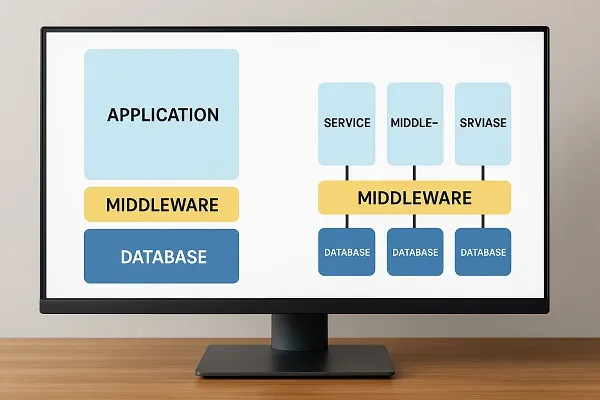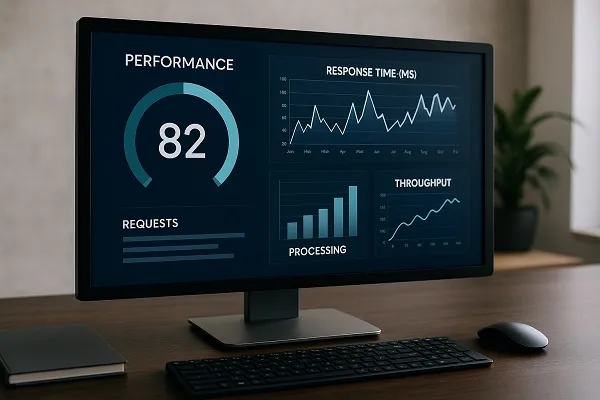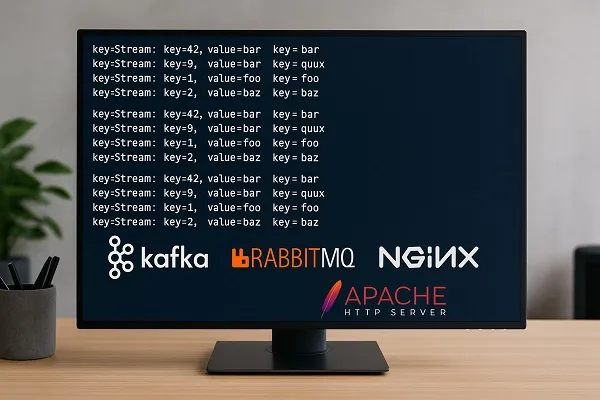Middleware as a Scalability Enabler
Scalability is more than just adding servers. Middleware provides the mechanisms that allow resources to be efficiently distributed and managed. This means developers and businesses can focus on expanding their applications without worrying about every small integration detail.
Key ways middleware supports scalability:
- Load distribution across multiple servers or services.
- Connection pooling to reuse and manage database connections efficiently.
- Caching mechanisms that reduce redundant requests.
- Service orchestration for coordinating microservices and APIs.
Handling High Traffic with Middleware
Web traffic spikes are inevitable. Middleware helps ensure that applications remain responsive under pressure. By acting as a traffic manager, it balances requests and prevents overwhelming any single server or database.
For instance, middleware can:
- Queue incoming requests during peak loads.
- Apply throttling rules to maintain performance.
- Redirect traffic to backup services when primary ones are at capacity.
Request Flow Example: Load Balancing
User Request → Middleware Load Balancer → Server A / Server B / Server C → Response Back to User
This flow shows how middleware distributes incoming requests across multiple servers to avoid bottlenecks and keep the application responsive.
Middleware and Resource Efficiency
A scalable system isn’t just about adding more hardware; it’s about using existing resources intelligently. Middleware enables efficient use of databases, APIs, and services by optimizing connections and eliminating redundancies.
Practical resource optimizations with middleware:
- Caching repeated queries to minimize database strain.
- Handling session management centrally to avoid duplication.
- Streamlining API calls for faster, lighter communication.
Request Flow Example: Database Caching
User Request → Middleware Cache Check
If Cached → Response Returned Immediately
If Not Cached → Database Query → Middleware Stores in Cache → Response to User
This illustrates how caching reduces the load on databases and speeds up response times.
Middleware in Monolithic vs. Microservices Architectures

Middleware plays different roles depending on whether the application uses a monolithic or microservices design. Understanding these differences helps organizations choose the right strategies for scalability.
In monolithic systems:
- Middleware often manages communication between the user interface, application logic, and database.
- Common use cases include connection pooling, centralized logging, and session handling.
- Scaling usually involves vertical scaling (adding resources to a single system), so middleware focuses on efficiency rather than distributed coordination.
In microservices architectures:
- Middleware becomes essential for coordinating hundreds or thousands of services.
- It handles service discovery, routing, and API management to keep communication seamless.
- Middleware solutions like service meshes or API gateways ensure consistent security, observability, and performance across distributed components.
- Horizontal scaling (adding more service instances) relies heavily on middleware to balance and synchronize workloads.
Flow Example: API Gateway in Microservices
User Request → Middleware API Gateway → Service A / Service B / Service C
Each Service → Database / Cache / External API → Middleware Aggregates → Response to User
This flow shows how middleware orchestrates multiple services to deliver a single, seamless response.
The Role of Middleware in Microservices Scalability
Microservices architectures depend heavily on middleware to scale effectively. Since microservices often communicate through APIs, middleware manages these interactions while keeping latency low.
Middleware functions in microservices environments:
- Routing API calls to the right service instance.
- Ensuring security and authentication at scale.
- Monitoring service performance and automating recovery.
This allows applications to grow by adding services independently, without breaking existing structures.
Middleware for Database Scalability
Databases are often the most challenging component to scale. Middleware adds an abstraction layer that makes scaling databases less disruptive.
- Connection pooling ensures thousands of users can access data without exhausting resources.
- Middleware-based caching reduces the load on primary databases.
- Sharding and replication management can be coordinated through middleware layers.
Middleware and Application Performance

Scalability is not just about handling more users—it’s about maintaining performance while scaling. Middleware ensures that user experience remains smooth, even as systems expand.
Performance advantages include:
- Reduced latency with efficient routing.
- Consistent response times during peak usage.
- Fault tolerance through retry mechanisms and failover strategies.
Security and Stability at Scale
As systems scale, so do potential vulnerabilities. Middleware strengthens web application security by applying consistent policies across all services.
Security benefits of middleware include:
- Centralized authentication and authorization.
- Traffic encryption management.
- Protection against common attacks like DDoS or injection attempts.
By securing communication channels and managing requests uniformly, middleware prevents scalability from opening security gaps.
Monitoring and Observability with Middleware
One of the hidden strengths of middleware is its role in monitoring application performance. By sitting between front-end and back-end systems, it provides valuable insights into bottlenecks, request failures, and throughput.
Observability features often integrated into middleware:
- Logging and tracking requests.
- Real-time performance dashboards.
- Alerts for anomalies or service degradation.
With this visibility, scaling decisions become data-driven rather than guesswork.
Real-World Middleware Technologies for Scalability

Middleware is not just a concept—it’s powered by real tools that make scalability possible. Depending on the architecture, businesses often use a combination of technologies to meet their scalability goals.
Examples of widely used middleware:
- Nginx and HAProxy: Load balancers that manage traffic and distribute requests efficiently.
- RabbitMQ and Kafka: Messaging middleware that decouples services and ensures reliable communication at scale.
- Redis and Memcached: In-memory caching middleware that reduces database queries and speeds up response times.
- Kong and Traefik: API gateways that manage, secure, and monitor API traffic for microservices.
- gRPC and GraphQL middleware: Enhance service communication efficiency while supporting high-volume data flows.
These technologies highlight how middleware directly impacts scalability by addressing traffic management, data flow, and performance.
Building Scalable Architectures with Middleware
Middleware is not a single tool but a set of practices and technologies working together. Choosing the right middleware stack depends on the type of application, the expected traffic, and the integration points needed.
When architecting for scalability:
- Select middleware that supports distributed systems.
- Prioritize solutions with built-in caching and load balancing.
- Ensure monitoring and observability features are available.
- Test middleware performance under simulated high-traffic conditions.
The role of middleware in web scalability is undeniable. From load balancing to database optimization, middleware ensures that applications can handle growing demands without compromising stability or performance. Businesses that invest in the right middleware strategies build resilient systems capable of scaling seamlessly. By treating middleware as a core part of web architecture, organizations not only prepare for growth but also deliver consistent, reliable user experiences under any traffic conditions.
Content reviewed and published by Parrot Branding Editorial Team.

